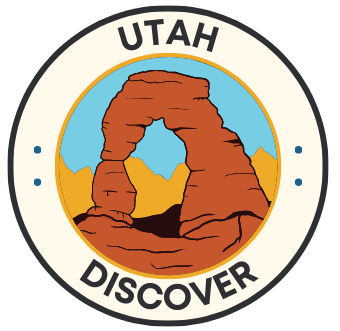Rafting the Ruby Hosethief section of the Colorado River is, without a doubt, one of our family’s favorite rafting trips. It is the perfect river trip for families and those who are new to rafting. This section of river has Class I-II rapids and is surrounded by a beautiful canyon with a variety of hikes and petroglyphs that you can stop and see along the way. If you are looking for a very family-friendly or rafting trip with mild rapids and stunning landscapes, then Ruby Horsethief is the trip for you. We have taken all of our kids (including our four-month-old) on this trip and it has been nothing short of fantastic. Along the way, there are some very small rapids and each night ends with some really cool camping sites. Whether you’re looking for an escape into nature or an introduction to rafting, the Ruby Horsethief section offers something for everyone.
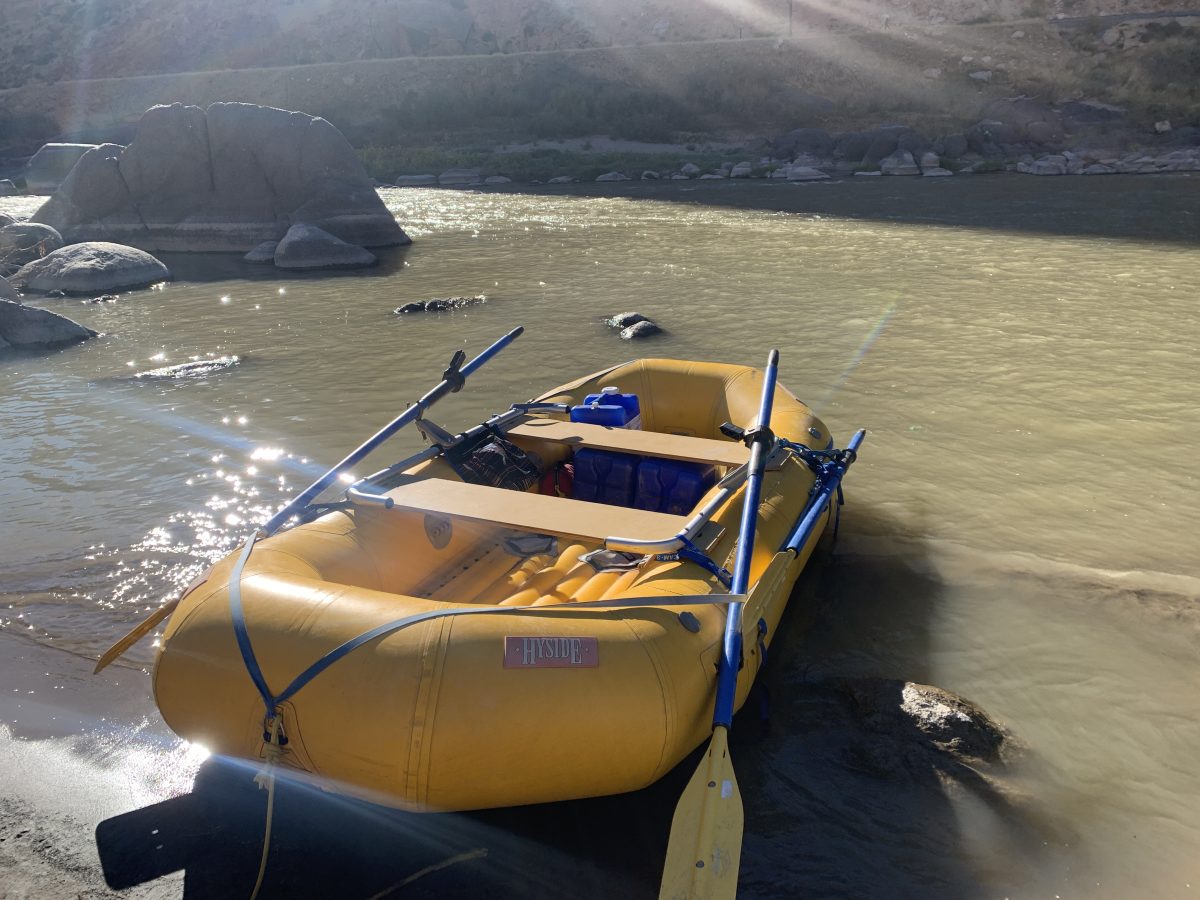
Getting There:
The put-in is just inside the Colorado border off the Loma exit (exit 15).
To get to the Loma boat ramp from Grand Junction:
- Take I-70 West
- Exit 15 for CO-139 North towards Loma
- Turn right on US-6 West
- Turn left into Loma boat ramp- If you follow the road all the way down the boat ramp is at the end of the road. Parking is up the hill
- Distance: About 15-20 miles Time: About 20-30 minutes
If you are coming from Moab to the Loma boat ramp:
- Take US-191 North
- Merge onto I-70 W towards Green River
- Take exit 15 for CO-139 North towards Loma
- Turn right on US-6 West
- Turn left into Loma Boat Ramp- If you follow the road all the way down the boat ramp is at the end of the road. Parking is up the hill
- Distance: About 110 miles Time: About 1 hour 45 minutes.
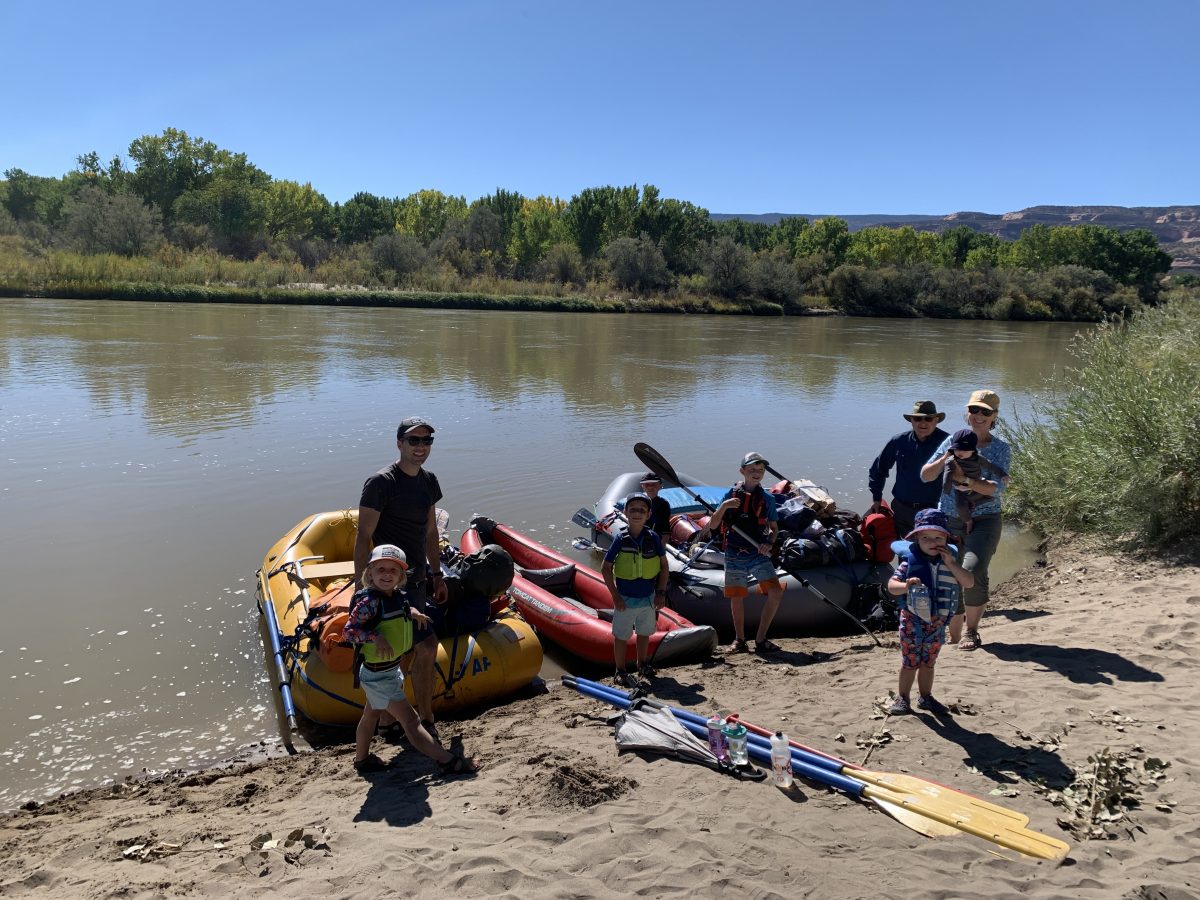
How to get to the takeout at Westwater Ranger Station:
- Exit Loma Boat Ramp onto US-6 East
- Merge onto I-70 E towards Grand Junction
- Continue on I-70 E into Utah
- Take exit 227 for UT-128 West
- Turn left onto UT-128 W, follow signs for Westwater Ranger Station- it is about 9 miles from from the highway
- Distance: About 45 miles Time: About 45 minutes to 1 hour from the Loma boat ramp
If you want to extend your trip you can continue down the river and do the Westwater Canyon.
You will need two cars to do a shuttle to get a car at the take out or you can pay a company to do the shuttle for you (see below for a shuttle recommendation). If you are wondering what a shuttle is, it is a shuttle is the process of moving vehicles from the starting point (put-in) of your rafting trip to the ending point (take-out). This is important because, after floating down the river, you will need a way to get back to your starting location to get your car.
Here’s why a shuttle is important:
- One-way Journey: Rafting trips usually flow downstream, meaning you end up at a different location from where you started. Without a vehicle at the take-out, you’d have quite the challenge getting back.
- Convenience and Timesaving: Having a vehicle waiting at the take-out allows for an immediate return to your lodging, campsite, or home, saving time and avoiding the hassle of arranging last-minute transportation.
- Safety and Flexibility: Conditions can change (like weather or water levels), sometimes making it necessary to exit the river quickly. A shuttle provides the flexibility to adapt plans and ensures safety by facilitating easy access to vehicles.
Length of Trip
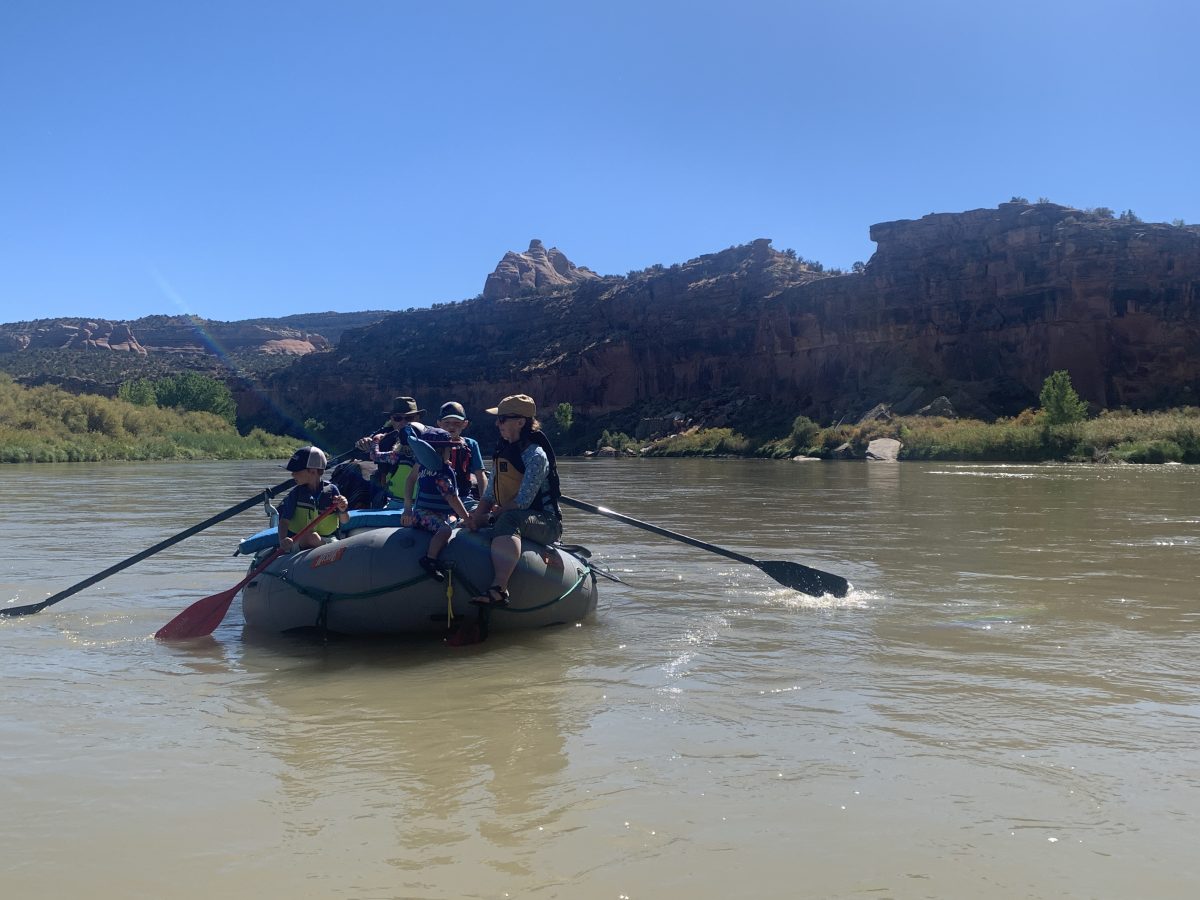
Most people raft the 25-mile Ruby Horsethief section in three days and two nights. You can extend the trip to five days. For our family we have found that three days and two nights works the best for us. It gives you just enough time on the rafts and plenty of time at the camp to play in the river and go on some small hikes.
Who Should Raft Ruby Horsethief?
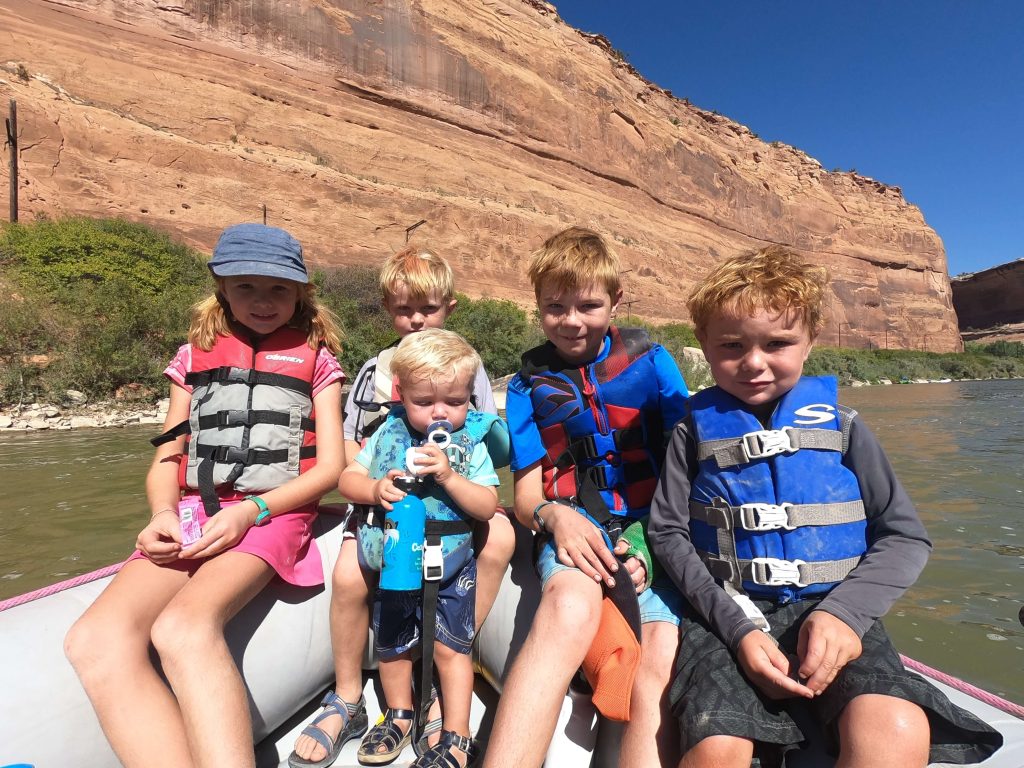
The best part about Ruby Horsethief is that it is the perfect rafting trip for anyone! It is very family friendly and the perfect for trips with lots of kids or people that are new to rafting. Even the older people in your group will enjoy the amazing scenery and hiking. This section of river is mostly flat water with a few small rapids and beautiful views along the way. On our last trip we had people ranging from our four-month-old baby to our 68 year old grandparents, and everyone had an amazing time!
Read Next:
- 11 Fantastic Moab Bike Trails For Kids
- 23 Incredible Things To Do With Kids in Arches National Park
- 10 Best Fruita Bike Trails For Kids
- Biking Canyonlands White Rim With Kids: 100 miles of desert biking
Best Time of Year to Raft Ruby Horsethief
Ruby Horsethief is open to float all year long. There is almost always good water flow down the Ruby Horsethief section of the river. The max flow that you should run it is 30,000 CFS (cubic feet per-second) If you are going with young kids I would plan to go when the river was under 10,000 CFS.
The river usually peaks around 20,000 CFS at the end of May or early June depending on Spring runoff. By September/October it is usually running at 5,000 CFS. You can check the flow here.
Summer
Summer can be a great time to raft this section as long as you are ok with getting in the river A LOT to stay cool. There isn’t much shade on this trip so it can get pretty hot during the day. If you are going with kids make sure you bring some kind of shade on the raft. Either a big umbrella or a raft bimini works really well. Make sure you bring bug spray because bugs are also more common in the summer. The river is flowing faster in the summer so you won’t have to row as much as in later in the year. Make sure to be prepared for summer storms that can come out of nowhere.
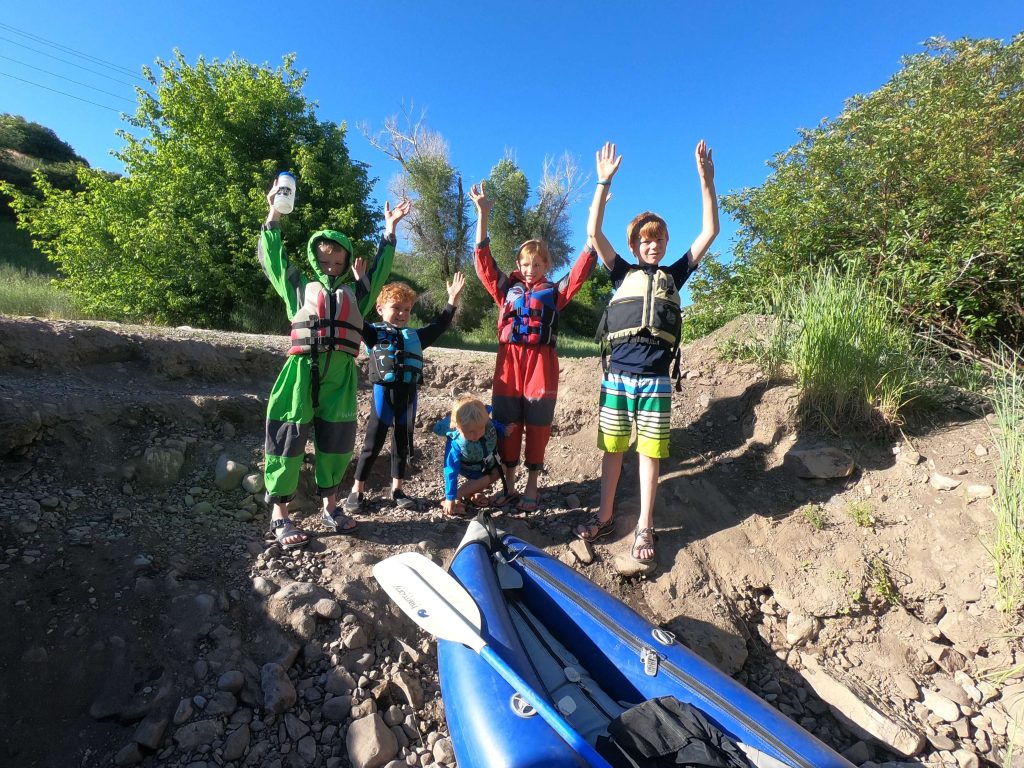
Fall
Rafting this section in the Fall is the best time to go with young kids. The water is slower and the weather is more consistent with warm days and cool nights. Our favorite time to raft Ruby Horsethief with our kids is during September or October. It is still plenty warm during the day to swim in the river and it cools down at night to help everyone sleep. We like to bring some kind of shade with us on the river to keep us cool. It can be difficult to camp with kids that are too hot at night so we have found the fall to work best for us. Since the water levels are lower there is more beach to play at the campsites too.
Guided Trips on the Ruby Horsethief Section
If Ruby Horsethief sounds like the trip for you, but you aren’t sure if you want to take on planning a trip by yourself, you’re in luck! There are a few companies that guide this section of the river if you are looking to do guided trip. A guided trip is perfect if this is your first time rafting and you don’t have the gear or experience you need to raft by yourself. A company will provide almost everything to make the trip possible.
Need to Know
- There is a minimum age- 10 years old seems to be the most common you can check with a few companies if you have anyone younger than 10
- Another company requires you to have a group of 12
- Around $450-$579 per person depending on the company
- Only have to show up with your own personal items
- Raft, lifejackets, food, shuttle, and guide provided
Planning Your Own Trip
If you are planning your own trip down Ruby Horsethief you can rent gear if you need to from most universities in Utah and there are plenty of raft rental companies in Utah and Colorado. We have found that the Universities in Utah tend to be the least expensive.

Need to Know
- Overnight camping permits are required and have to be reserved in advanced. You can get a permit two months in advance at 8 am MDT. You can get a permit from Recreation.gov.
- You need to have all of the gear and food for the entire trip.
- Check the list of requirements (first aid kit, fire pan, extra oar, etc) before leaving at this site. Rangers will check to make sure you have all of the proper gear and will not let you launch if you are missing items.
- You will need to shuttle your vehicles so there is at least one vehicle at the take out. There is a company that will do it for you at Rimrock Adventures for $120 per vehicle. We always shuttle our own vehicles and it takes about 70 minutes.
- No minimum age requirement
- Group size is limited to 25 including dogs (2 dogs max per group)
What to Pack for Ruby Horsethief
Almost everything you pack should be able to fit in a dry bag. These Watershed bags are our favorite personal bags. I have this one in orange and it is by far the best dry bag I have ever used. It is really easy to find what you need and very waterproof. These are our favorite bags for bigger gear such as tents and sleeping bags for kids. These are great for things you need during the day such as sunscreen, snacks, putting extra layers. Don’t forget to bring life jackets for everyone and anyone under 13 must wear a lifejacket at all times while on the river. We recommend that everyone (even adults) always wear a lifejacket when on the river, even if it isn’t required for this section of river.
Personal items that must fit inside a dry bag
- Swimsuits- at least 2
- Sun protective clothing
- Sunglasses
- Hat
- Sunscreen and Chapstick with SPF
- Quick drying clothing- try to avoid cotton for when you are on the river
- Fleece jacket
- Rain Jacket
- Warm clothes for evenings and nights- especially for fall and winter trips
- Water shoes such as Chacos or Keens
- Hiking shoes- if you are planning on going on a hike or just to wear around camp
- Hammocks- Some of the campsites have a lot of great trees some have little to none
- Camp chair- Most campsites are sandy so backpacking camp chairs tend to sink into the sand and not work as well
- Headlamp
- Toiletries
- Lotion- my skin always gets so dry on the river!
- Small towel
- Biodegradable shampoo and conditioner
- Bug spray- depending on the time of year the bugs can get bad
Camp Equipment
- Stove
- Table
- Fuel
- Water- We recommend bringing most if not all of your water for the trip. The water is very silty and difficult to filter
- Water filter- even though we bring lots of water, its still a good idea to have a back-up water filter
- First aid kit
- Repair kit for your raft
- Map of river- this map is our favorite for this trip
- Garbage bags- You are required to take all garbage out of the canyon. Including coals, garbage, food etc
- Groover or reusable toilet system- Required to take out solid waste including pet waste
- Fire pan- make sure to check if there is a fire ban in place
- Extra paddles and oars
- General camping gear- tent, sleeping bags, pads, etc
Campsites Along the Way
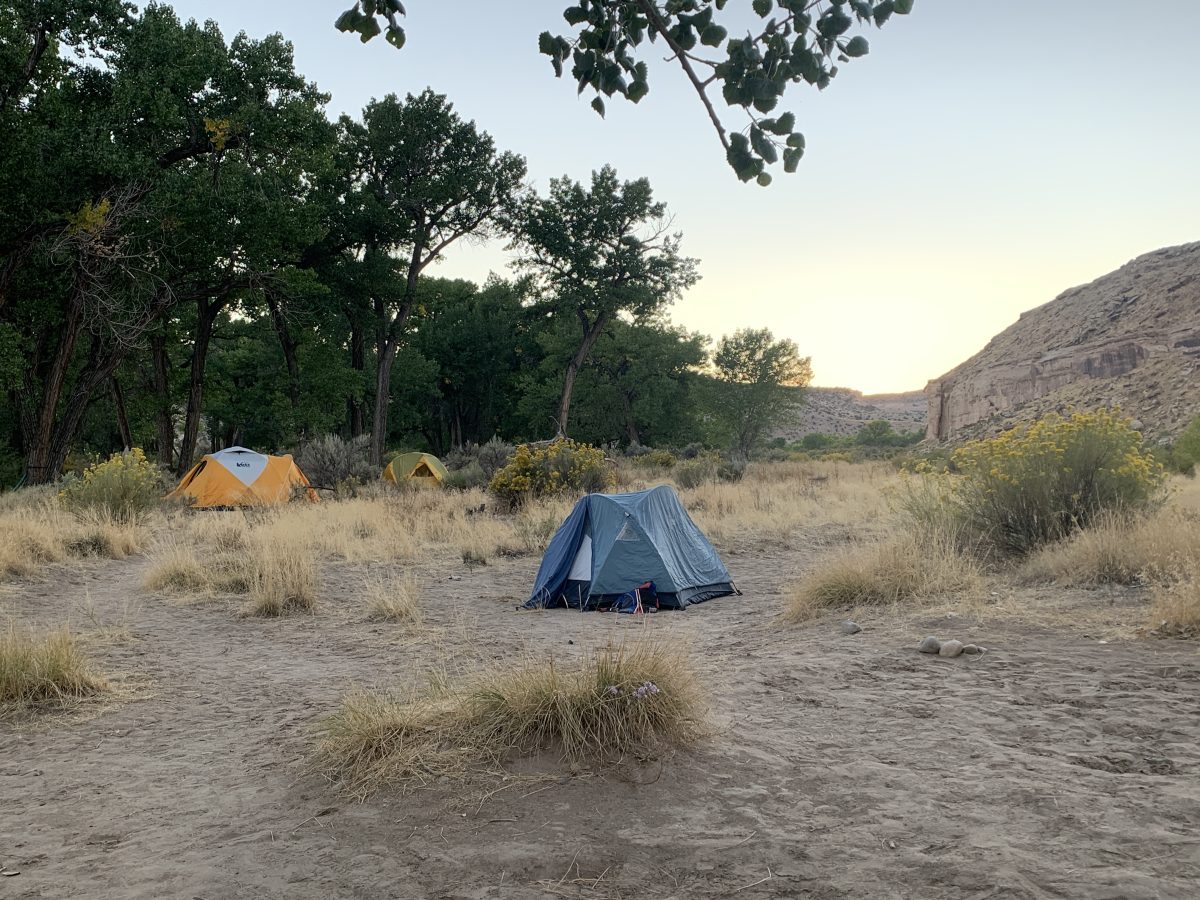
There are some really great campsites along Ruby Horsethief. You can find a map at Recreation.gov to help you plan ahead. This map is our favorite map for this section of the river. It is a waterproof guidebook that has a map that has a lot of information about each campsite, side hikes, where to stop for petroglyphs, historical information, information on rapids, and where to scout the bigger rapids (no big rapids on Ruby Horsethief) and river mileage. This guidebook covers Ruby Horsethief, Westwater canyon, and Moab Daily through the confluence with the Green River. It also covers Cataract Canyon and a few others. It is a must-have for guiding your own trips. You can look through it to find the campsites that would fit your needs.
Side Hikes and Points of Interest
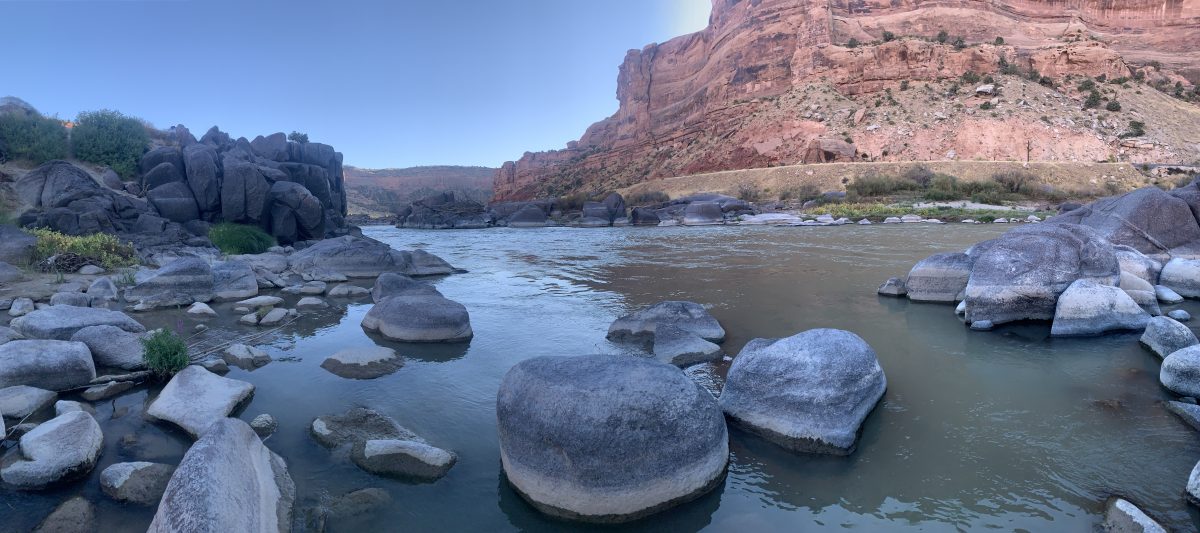
The Ruby Horsethief section offers access to unique geological formations, ancient rock art, and scenic overlooks. There are several places to hike and some petroglyphs.
Rattlesnake Canyon Arches
Up the Rattlesnake Canyon, there are the world’s second-largest concentration of arches outside of Arches National Park. To access this hike stop at the Rattlesnake campsite. There are few options for trails to make the hike longer. You can read more about the hike here or here is a longer version of the hike. It does get very hot so plan accordingly and bring at least 1.5 liters of water per person. Here is a map of another one of the hikes up the canyon.
Mee Canyon
There is a really cool hike up Mee Canyon. At the very end of the hike is a huge alcove. Here is more information about the hike. The hike from the river to the Mee Canyon Alcove is about 2.5 to 3 miles one way depending on the starting point along the river. The trail is difficult with some steep sections and some areas where route finding may be necessary. There is a lot of elevation gain so be prepared with enough water and sun protection.
Petroglyphs
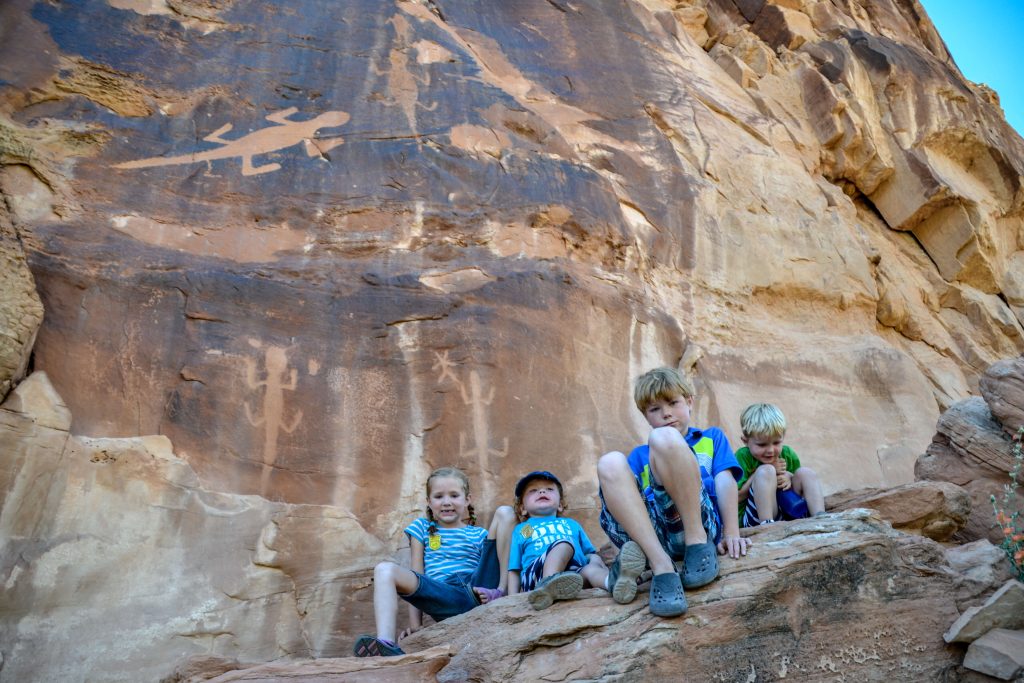
There are petroglyphs along the Ruby-Horsethief section of the Colorado River. This area is rich in Native American history, and the rock art left behind is a fascinating glimpse into the past. The petroglyphs found along this stretch of the river are believed to have been created by the Fremont people, ancestors of contemporary Puebloan tribes, and possibly other indigenous groups over thousands of years.
These ancient artworks can be seen at various points along the riverbanks and in nearby canyons, often depicting animals, human figures, and abstract designs. Some of the petroglyph sites are more accessible than others, with locations varying from just a short walk to a longer hike away from the river. Check out the guidebook for more information on where to stop to see them. Make sure to never touch them and leave the area how you found it.
Wildlife That is Found in this Area
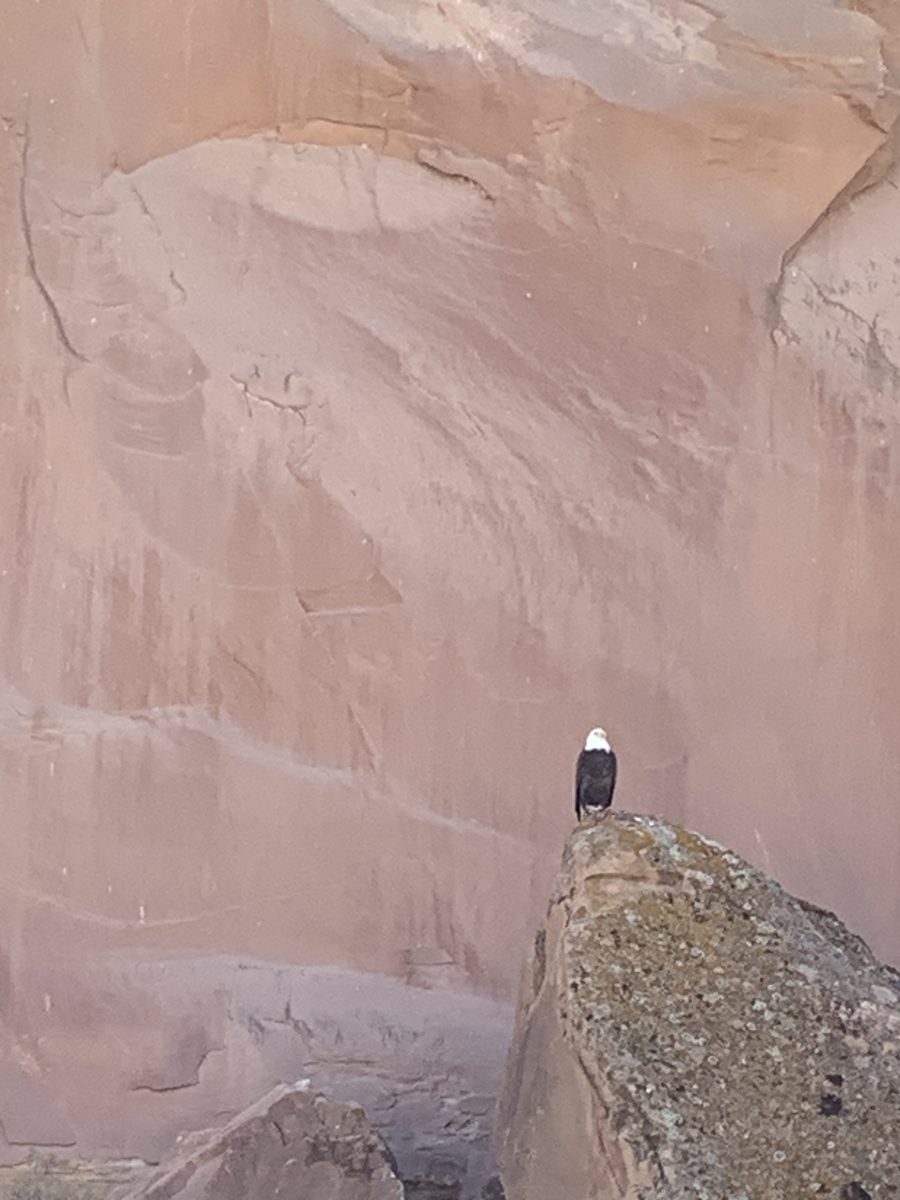
There are a variety of animals along the Ruby Horsethief stretch of the river. You might see bald eagles, especially during winter months, and hawks circling overhead. Great blue herons are often spotted along the water’s edge. We have seen a few bald eagles and they were so fun to watch. We have also seen some mule deer grazing near the riverbanks, especially during dawn and dusk.
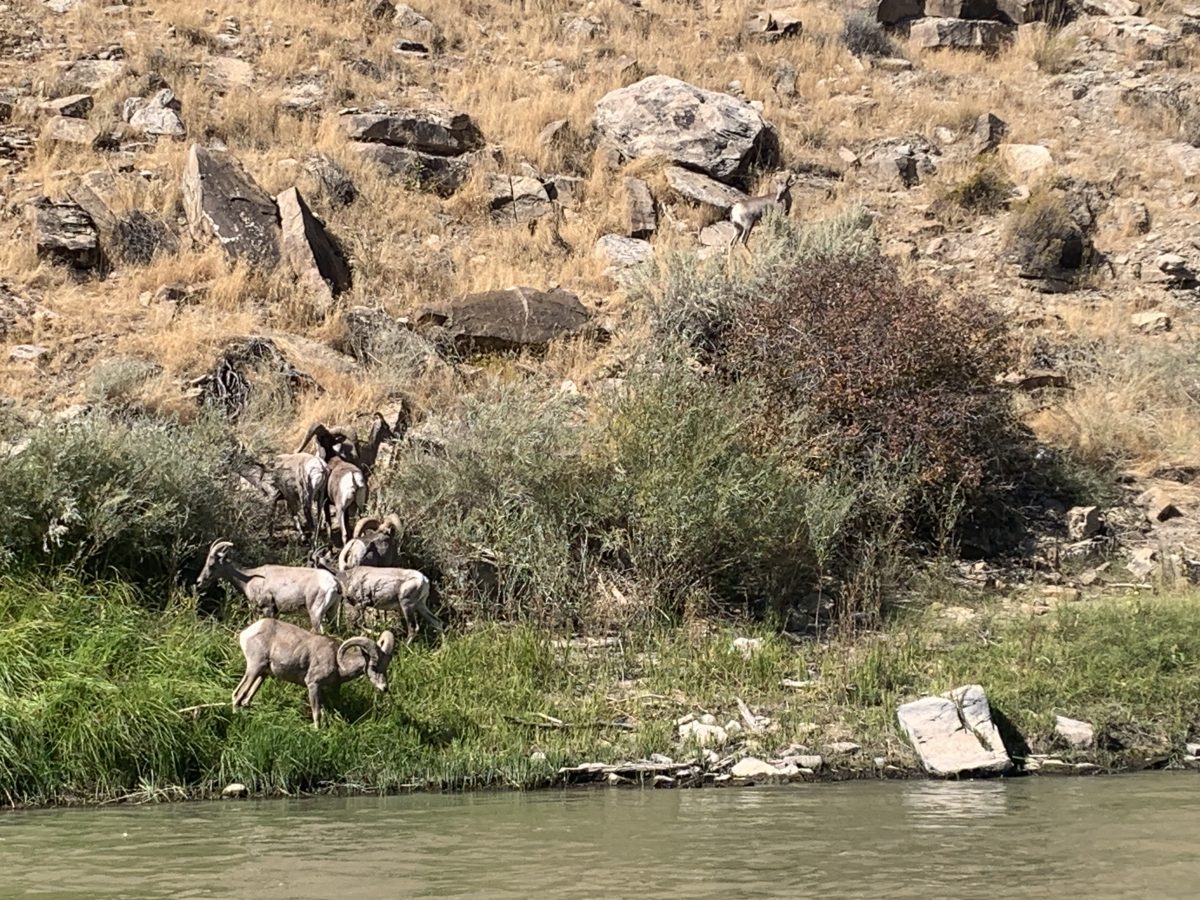
You might also spot river otters playfully navigating the waters, and if you’re particularly lucky, a bighorn sheep might be seen clambering on the steep canyon walls. On our last trip, we saw a big herd of bighorn sheep right by the river that we were able to watch for a few minutes.
The Ruby-Horsethief section is also popular for fishing, with catfish, smallmouth bass, and trout among the species that might be caught.
Leave No Trace
While enjoying the wildlife, it’s important to maintain a respectful distance, especially since this area is home to sensitive habitats. Always practice Leave No Trace principles to ensure that the natural beauty and animal residents of the Ruby-Horsethief stretch remain undisturbed for future visitors to enjoy.
- Plan Ahead and Prepare: Research and prepare for your visit to minimize your impact on the environment and ensure safety.
- Travel and Camp on Durable Surfaces: Stick to established trails and campsites to avoid damaging vegetation and soil.
- Dispose of Waste Properly: Pack out all trash, leftover food, and litter. On this stretch of river it is required to pack out all solid waste using a reusable toilet system.
- Leave What You Find: Preserve the past and respect wildlife by not touching cultural or historical structures and artifacts. Do not pick plants, rocks, or other natural objects.
- Minimize Campfire Impacts: Use a camp stove for cooking and enjoy campfires in designated areas only. Keep fires small and ensure they are completely extinguished before leaving.
- Respect Wildlife: Observe animals from a distance without feeding them or affecting their natural behaviors.
- Be Considerate of Other Visitors: Respect other users of the outdoors by keeping noise levels down and maintaining polite trail etiquette.
Following these principles ensures that natural spaces remain beautiful and accessible for everyone.
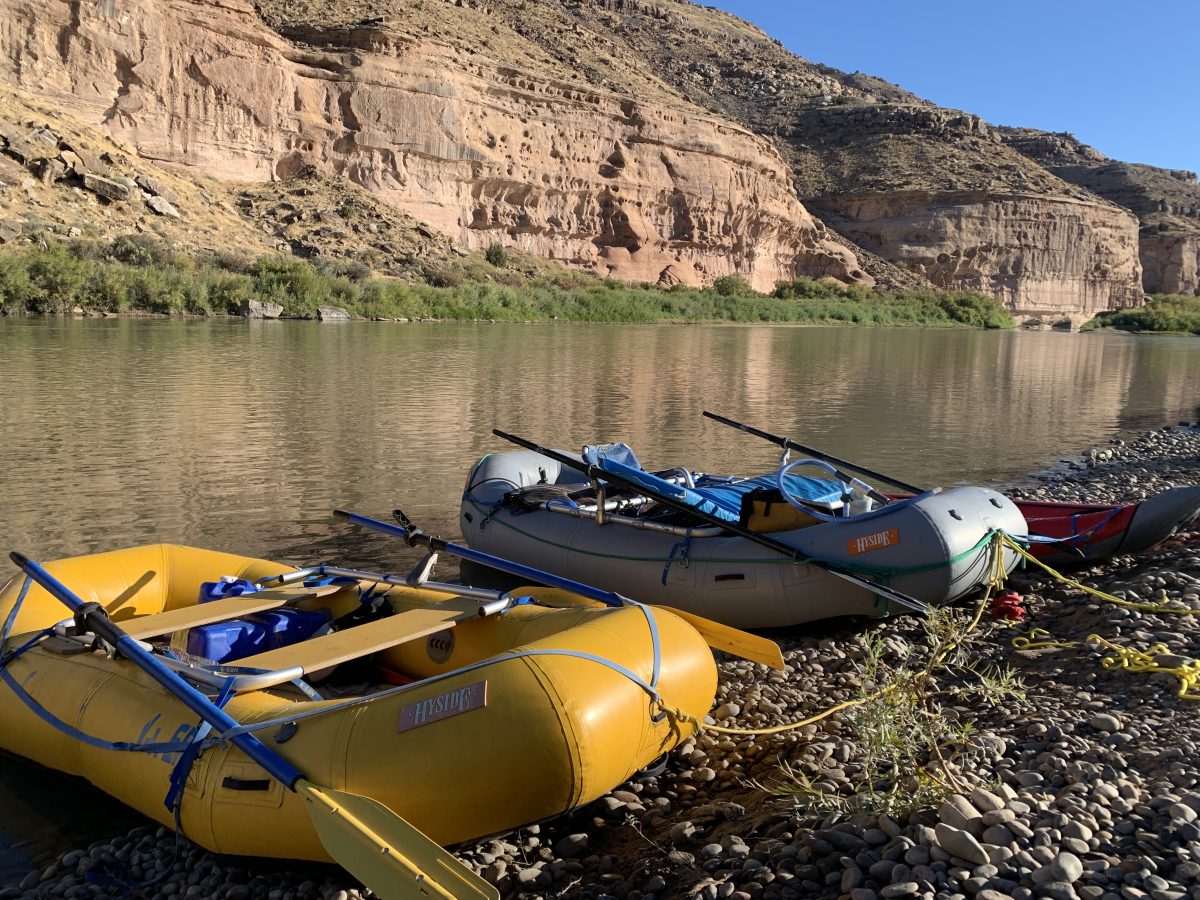
Safety Tips
It is important to be prepared while on a river trip. Here are a few tips to help keep everyone safe while rafting.
Wear a Life Jacket at All Times: Although this section of the river it is only required for those under 13 to wear a lifejacket at all times on the river. A properly fitting life jacket should be worn by all rafters at all times on the water, regardless of their swimming abilities.
Be Prepared for Weather Changes: The weather can change rapidly, especially in canyon country. Pack and wear layers to adjust to varying temperatures and bring rain gear to stay dry. Always check the weather forecast before your trip. It can also get very hot on the river so make sure you bring some kind of shade.
Be Prepared for Emergencies: Carry a first-aid kit and know how to use it. It’s also wise to have a plan for emergency communication, especially in areas where cell service may be unavailable.
Stay Hydrated and Protect Yourself from the Sun: Drink plenty of water and use sunscreen liberally. The sun can be more intense on the water and in high-altitude environments. It would be smart to bring sun protective clothing and make sure you bring plenty of water. We like to bring powered Gatorade to help our kids drink more water.
Know Your Route: Familiarize yourself with the river map and be aware of any rapids, their classifications, and points where you might need to be extra cautious.
Respect River Etiquette and Regulations: Give space to other boaters, be mindful of noise levels, and follow all local regulations regarding camping, fires, and wildlife.
Take a River Rafting Course or Go with a Guide: If you’re new to rafting or to the Ruby-Horsethief section, consider taking a course on river safety or going with an experienced guide who knows the river well.
Other Questions?
The Ruby Horsethief section is known for its gentle waters, featuring Class I and Class II rapids. This makes it an ideal choice for families, beginners, or anyone looking for a more relaxed rafting experience.
Yes, this trip is very family-friendly due to the mild nature of the rapids and the scenic beauty of the surrounding landscape. While guidelines vary by outfitter so double check their requirements.
Some prior rafting experience is necessary for the Ruby Horsethief section. It is a great beginner trip, but you still need to be able to control and maneuver your raft down the river safely. If you are just starting out, you can always go with a guided trip with an outfitter that will provide all the necessary gear and guidance to ensure a safe and enjoyable journey.
